- Home
- Julian Stockwin
Stockwin's Maritime Miscellany Page 2
Stockwin's Maritime Miscellany Read online
Page 2
* * *
A SHIP THAT LIVED UP TO HER NAME
In command of the rickety old galleon Revenge Sir Richard Grenville was separated from the rest of the English fleet off the Azores in 1591. He could have fled but he chose to stand and fight the Spanish, outgunned and outnumbered 53 to one. Despite these insane odds Revenge battled all through the night and the next day and, beating off all attempts to board her, destroyed two Spanish ships. At one stage Grenville ordered his own ship to be sunk, rather than see her go to the enemy, but then relented on condition that the Spanish spare the lives of his crew. Grenville, who had been gravely wounded, died aboard the Spanish flagship several days later.
Revenge lived up to her name – less than a week after the battle, with a 200-man Spanish prize crew aboard, she was lost with all hands in a vicious storm. The ship’s valiant deeds have ensured that she is one of the most renowned in naval history, and a number of ships have proudly borne her name, including one at the Battle of Trafalgar. The most recent Revenge was a Polaris submarine launched in 1969 and retired several years ago.
Tennyson celebrated Grenville’s bravery in his poem ‘The Revenge: a Ballad of the Fleet’, which includes this exhortation from Grenville:
‘At sea or ashore
We die – does it matter when?
Sink me the ship, Master Gunner – sink her, split her in twain!
Fall into the hands of God, not into the hands of Spain!’
Early nineteenth-century print depicting the last hours of Revenge’s heroic fight.
THE MAN IN THE LODGE
Portsmouth Historic Dockyard’s oldest surviving building is the Porter’s Lodge, built in 1708. Ellis Markant was its first occupant and lived there until his death. He was the public face of the dockyard, the daily interface between the inside and outside communities. One of his most important duties concerned the dockyard muster bell; if it didn’t ring the town wouldn’t wake, shops wouldn’t open and men wouldn’t get to work on time.
His job was ‘to be constantly attending at the gate to open and shut the same for all comers and goers into and out…’ He had to guard the dockyard and its contents, allowing ‘no person to pass out of the dock gates with great coats, large trousers or any other outer dress that can conceal stores of any kind’.
There were some perks to the job; Markant could sell small beer in the summertime, ‘such as is fit to quench the parties thirst that drinks thereof, and to enable them to better to perform their labour, and not such as will distemper them’. His garden produced medicinal herbs such as feverfew (for headache) and thyme (used as a tonic) as well as vegetables for the ships.
* * *
AT LOGGERHEADS – in a state of serious disagreement, a sort of metaphysical butting of heads! DERIVATION: a loggerhead was an implement used aboard ship in caulking the seams in deck timbers. It consisted of a hollow iron sphere at the end of a shaft. The sphere was heated in a fire and then plunged into a bucket of pitch. This melted the pitch, which was then applied to the seams. A hot loggerhead was definitely something to keep away from…
* * *
TRAITOR TYRIE
The last time a hanging, drawing and quartering punishment took place in Britain was on 24 August 1782, at Portsmouth. Scottish spy David Tyrie had been convicted for carrying on a treasonable correspondence with the French. A contemporary account records that he was hanged for 22 minutes and then his head was cut off and his heart cut out and burned. He was then emasculated and quartered, his body parts put in a coffin and buried in the pebbles at the seaside. Immediately after the burial sailors dug up the coffin and cut the body into pieces as souvenirs.
STOP THE CARRIAGE!
On 26 January 1796 Captain Edward Pellew of the frigate HMS Indefatigable, dressed in splendid full dress uniform, and accompanied by his wife, was on his way to a formal dinner in Plymouth, a thriving port town near one of the Royal Navy’s most important naval bases. Their route took them past the open space above the sea cliffs known as the Hoe, with its magnificent view over the harbour – where Francis Drake had famously played bowls in the face of invasion by the Spanish Armada.
Despite stormy weather crowds were gathered on the Hoe gesturing excitedly out to sea. Pellew stopped his carriage and went to investigate. It soon became clear that Dutton, a troopship bound for the West Indies, had run on to rocks. Lying broadside against smashing waves she had lost her masts and was listing badly; the imminent loss of all aboard seemed in no doubt.
Pellew urged the onlookers to help (including the officers of Dutton, who enraged Pellew at having abandoned the passengers to their fate) – but nobody was willing to risk his life in the seething waters. The situation was desperate, so Pellew decided to go it alone. Quickly discarding his fine attire he threw himself into the sea and seizing the hawser (a large ship’s rope) that the officers had used to save themselves, and which was still attached to the ship, hauled himself hand over hand out to the stricken vessel. On the way timbers from the wrecked masts slammed into his back, but he ignored the pain. When he reached Dutton he clambered on deck and drew his sword. Assuming command, he told the frightened passengers three things: that they would all be saved if they quietly obeyed his orders, that he would be the last to quit the wreck – and that he would run through anyone who disobeyed him.
Order was swiftly brought to the chaos aboard, despite the fact that many of the soldiers, believing their end was near, had resorted to drink and were in a sorry state of inebriation. Pellew managed to get two additional hawsers ashore and contrived an ingenious endless rope cradle to convey passengers to safety. Others were taken off in boats that rescuers had eventually managed to bring alongside.
All of the some 500 men, women and children aboard were saved, including a three-week-old baby. Shortly after Pellew left, Dutton broke up and sank.
Pellew served the Royal Navy with great distinction for 50 years. He was undoubtedly one of the greatest fighting captains of the Napoleonic wars but has been somewhat overshadowed by Horatio Nelson. He died in 1833, a vice-admiral of the United Kingdom, peer of the realm and holder of many foreign honours.
A GLASS OF PUNCH, SIR?
The Right Honourable Edward Russel was captain-general and commander-in-chief of His Majesty’s forces in the Mediterranean. On 25 October 1694 he served a rather special punch from a marble fountain in his garden at Alicante, Spain. The ingredients of the beverage were 4 hogsheads of brandy, 8 hogsheads of water, 25,000 lemons, 75 l of lime juice, 560 kg of fine white Lisbon sugar, 3 kg of grated nutmeg, 300 toasted biscuits and a pipe of dry mountain Malaga. Russel had a large canopy constructed to keep off the rain, and a ship’s boy rowed around the fountain in a mahogany boat, filling the cups of the 6,000 assembled guests. When the poor lad became overcome with the fumes, another took his place.
* * *
CUTS NO ICE – makes little or no impression. DERIVATION: from an ineffective vessel that could not make much progress in the autumn pack ice of the Baltic.
* * *
WINDSOR CASTLE WINS THE DAY
At dawn on 1 October 1807 off Guadeloupe in the Caribbean, the lookout in Windsor Castle saw enemy sail rapidly overhauling them and the ship prepared to defend itself. With no prospect of escape the 28-man crew rigged the anti-boarding nets and went to quarters. The French privateer Jeune Richard, its crew of 92 outnumbering that of the Windsor Castle by more than three to one and with close to double their weight of metal, quickly closed in, but the nets prevented them from boarding.
Acting-Captain William Rogers prepared Windsor Castle for action and stood by to sink the ship should it be necessary to keep her out of enemy hands. After a fierce close-in fight over several hours in which Jeune Richard was severely damaged Rogers and just five men then stormed aboard the French vessel, killing the captain and tearing down their colours. Losses on the British side were 3 killed, 10 wounded; the French suffered 21 dead and 33 wounded.
Given the odds, this was a remark
able victory in itself, but Windsor Castle was no naval warship but a civilian vessel, a lightly armed Falmouth packet, run by the Post Office to carry mail, freight and passengers overseas.
The news of how Rogers had turned upon his pursuer and taken her as a prize caused a sensation in England. Among the many rewards Rogers received was the full captaincy of another packet ship.
NEW MEANING TO ‘MIND OVER MATTER’
Lord Horatio Nelson has been voted England’s greatest hero, the man who led the nation to her most glorious victories at sea. Yet this revered figure suffered so much throughout his life from disease and injury that he brings special meaning to the phrase ‘mind over matter’. He was wounded more times than any other Royal Navy admiral during the Napoleonic Wars. Ironically, Copenhagen, the hardest fought of all his battles, was the only one in which he was not hurt.
In his teens, serving in India, the young Horatio became ill with the first of many fevers that would turn his hair prematurely grey before the age of 25.
In July 1794, while engaged in the siege of Calvi in Corsica, he received his first serious battle wound and subsequently lost the use of his right eye. During the Battle of St Vincent in 1797 he suffered an internal trauma, and abdominal pain troubled him greatly in later years.
At Tenerife, in the Canary Islands, on the night of 24 July that same year he was leading a desperate assault ashore when he was struck in the upper right arm by a musket-ball. A tourniquet fashioned by his stepson saved his life. It is typical of Nelson that he refused to go back aboard his own ship HMS Seahorse in case he alarmed Betsy Fremantle, the wife of the captain, who was at sea with her husband at the time. Instead he was rowed to HMS Theseus, where his right arm was amputated. (Later, recalling the shock of the cold steel of the surgeon’s knife, he included in his fleet orders the instruction that henceforth all such instruments be warmed before use.)
At the Battle of the Nile Nelson sustained a wound to his forehead which cut right to the bone; the flesh fell over his good eye, temporarily blinding him.
Finally, at Trafalgar, a ball from an enemy musket struck the epaulette on his left shoulder and penetrated through his lung to the spine – where some of the gold braid from his epaulette was found to be still adhering to it. Nelson was carried below to the orlop deck in great pain; he died at 4.30 p.m., after stoically enduring for another two hours 45 minutes.
A French sniper mortally wounds Nelson. Today, a small brass plaque marks the spot he fell on Victory’s quarterdeck.
WOMEN IN RED
The annals of history record the name of Hastings as the site of the last invasion of Britain. But there is another contender – the town of Fishguard in southwest Wales. And the story of this attempt by France’s revolutionary government to liberate England is proof positive that the women ashore in the age of sail had just as much spunk as their men at sea!
On 22 February 1797 the French set in motion a plan to divert British troops away from Ireland so they could launch a major attack there. Some 1,400 soldiers led by Colonel William Tate, an American, were landed from four French warships on the shore of Carreg Wastad, just west of Fishguard.
However, the French were to have only two days on British soil. At the sight of military reinforcements mustering on the nearby hills they surrendered to the local militia led by Lord Cawdor. In fact it was not British Army Redcoats they saw, but hundreds of Welsh women in their traditional scarlet cloaks. One local woman is particularly celebrated as the heroine of the hour – Jemima Nicholas, a 47-year-old Fishguard cobbler, who advanced on 12 Frenchmen with a pitchfork and captured them all single-handedly.
A magnificent record of the event, ‘The Last Invasion Tapestry’, over 30 m long and in the style of the Bayeux Tapestry, is now on display at the Fishguard Town Hall.
* * *
A WEATHER EYE – alertness for a sudden change in the situation. DERIVATION: in the open sea the lookout watched on the weather, or windward, side of the ship. The first sign of a change always came on this side.
* * *
BURIED TWICE
During the Battle of Trafalgar 21-year-old Lieutenant William Ram on board HMS Victory was badly wounded by vicious wooden shards splintering out with the impact of round shot from Redoutable. Bleeding severely, Ram was carried below to the cockpit, where the surgeon did what he could to staunch the haemorrhage. When told of the severity of his injuries, Ram was so distraught that he tore off the ligatures that were being applied and rapidly bled to death. Along with other casualties he was committed to the deep.
Several days later his body was washed up on the Spanish coast and found by some English prisoners of war who identified the corpse from Ram’s name stitched into his shirt. They obtained permission from the governor of Cadiz to give him a Christian burial.
SCOURGE OF THE SLAVERS
The Royal Navy played a vital but little-known role in suppressing slavery. After the evil trade was outlawed by the British Parliament in 1807 the West Africa Squadron was established the following year. Initially the unit was limited to intercepting British slave ships, fining them £100 for every slave found aboard, but it expanded to target slavers from other countries.
The West Africa Squadron patrolled the 5,000 km of the West African coast for 60 years and at its height accounted for one-sixth of the resources of the Royal Navy and Royal Marines. The squadron seized 1,600 vessels and liberated 150,000 slaves, and played as important a role as the campaigners led by William Wilberforce in bringing slavery to an end.
One of the most successful ships was poacher-turned-gamekeeper HMS Black Joke. A captured slave ship, she had originally sailed under the name of Henrietta. With a fair wind Black Joke was capable of overhauling the best on the coast and although only lightly armed she quickly became the scourge of the slavers.
Among Black Joke’s most notable conquests was the Spanish brig El Almirante. The slaver was sighted on 1 February 1829 and although her quarry was vastly superior in size and arms Black Joke immediately gave chase. The winds were light and variable and Black Joke had to resort to sweeps to close the gap. The chase lasted 11 hours under the blazing sun and the light was fading as a desperate duel began. When the Spanish vessel finally surrendered it had 15 crew dead and 13 wounded. Black Joke had suffered six wounded, two of whom later died. Over 450 slaves were found chained together in appalling conditions in the hold of El Amirante.
In one year alone Black Joke took 22 ships and liberated 7,000 slaves. Sometimes she worked in tandem with another ship. In September 1831 she was sailing with the schooner HMS Fair Rosamond off the mouth of the Bonny River when they surprised two Spanish slavers. Recognising the Royal Navy ships the vessels fled back up the river and Black Joke and Fair Rosamond gave chase. As they were overhauled the Spanish began throwing slaves over the side. Some were chained together in pairs and quickly drowned. Others tried to make for the shore but were attacked by sharks and torn to pieces. The four vessels crammed on all sail as they raced up the river. Eventually the slavers were captured and what remained of their sorry human cargo given their freedom.
HMS Black Joke met an inglorious end in May 1832. Her timbers rotten, she was condemned by Admiralty surveyors and burnt. All that remains of her is an envelope filled with brown dust in the Public Record Office at Kew in southwest London.
There was a huge human cost for the men who served in the West Africa Squadron. Much of daily life was tedious and there was little chance of promotion as a result of a celebrated victory in a famous battle. Fever was rife and between 1830 and 1865 some 1,600 men in the West Africa Squadron died. In one year about 25 per cent of the officers and men died, a proportion 15 times higher than the navy had ever lost in wartime in any year.
Speedy topsail schooners were favoured by slave traders on the west coast of Africa.
FINEST SINGLE-SHIP ACTION
During the War of 1812 the Royal Navy lost three frigates, HMS Macedonian, HMS Guerriere and HMS Java, to the young United St
ates Navy. This was a bitter blow to the pride of a nation with such a long and proud tradition. Captain Philip Broke knew that his ship HMS Shannon could not match the big American frigates in size and firepower, but gunnery was one thing he could do something about. During his seven years as captain of Shannon he worked his ship to a peak of fighting efficiency with an unrivalled regime of gun drill. Every day, with the exception of Sunday, his men were exercised at quarters and firing at a target.
In June 1813 Shannon engaged USS Chesapeake under Captain James Lawrence in an epic fight off Boston, the finest single-ship action in the age of sail.
After Shannon fired a devastating broadside into Chesapeake Lawrence fell wounded but continued to give orders to return fire. A vicious hand-to-hand fight ensued as Broke himself led a boarding party on to Chesapeake. Lawrence bravely urged his men: ‘Don’t give up the ship!’ Three American sailors attacked Broke. He killed the first, but the second hit him with a musket and the third sliced open his skull before being overwhelmed.
The entire action lasted only 11 minutes, but its unequalled ferocity (a projectile hit Shannon every four seconds) left 148 American and 83 English sailors killed or wounded. Lawrence died of his wounds three days later. Shannon’s victory caused a sensation in America and England, and Broke returned to a hero’s welcome. He eventually recovered from his wound but was unable to return to active service and was troubled with head pains for many years.

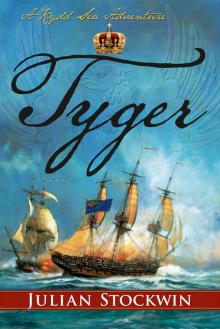 Tyger: A Kydd Sea Adventure (Kydd Sea Adventures)
Tyger: A Kydd Sea Adventure (Kydd Sea Adventures) Seaflower - Kydd 03
Seaflower - Kydd 03 6-Tenacious
6-Tenacious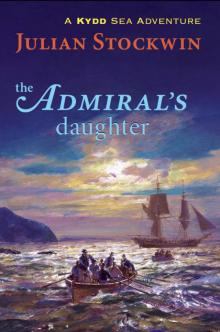 The Admiral's Daughter
The Admiral's Daughter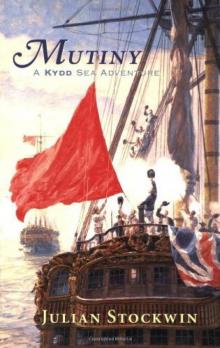 Mutiny k-4
Mutiny k-4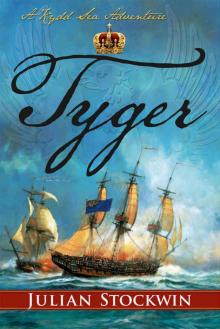 Tyger
Tyger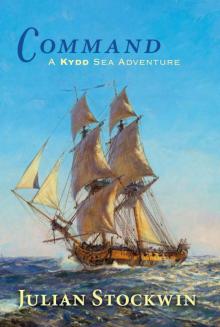 Command
Command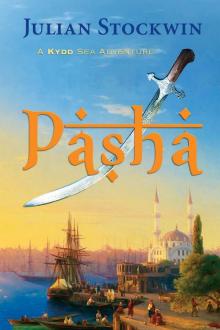 Pasha
Pasha Artemis k-2
Artemis k-2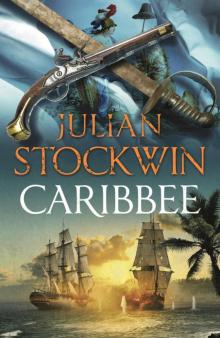 14-Caribbee: A Kydd Sea Adventure
14-Caribbee: A Kydd Sea Adventure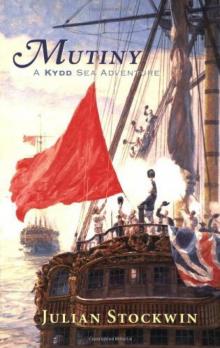 Mutiny - Kydd 04
Mutiny - Kydd 04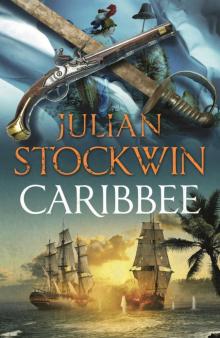 Caribbee
Caribbee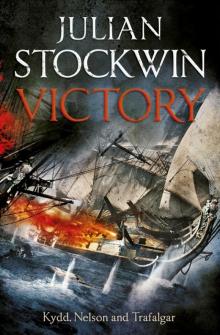 Victory
Victory Quarterdeck
Quarterdeck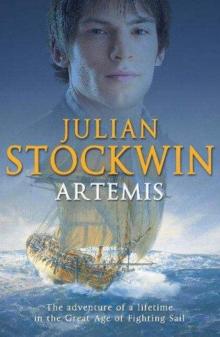 Artemis - Kydd 02
Artemis - Kydd 02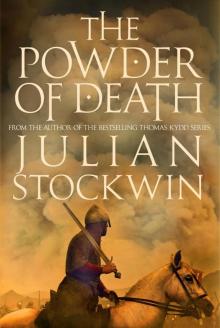 The Powder of Death
The Powder of Death Conquest
Conquest Betrayal tk-13
Betrayal tk-13 Stockwin's Maritime Miscellany
Stockwin's Maritime Miscellany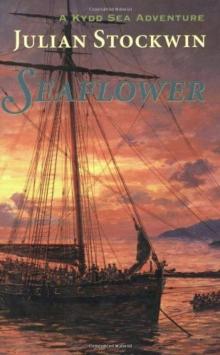 Seaflower: A Kydd Novel
Seaflower: A Kydd Novel Mutiny
Mutiny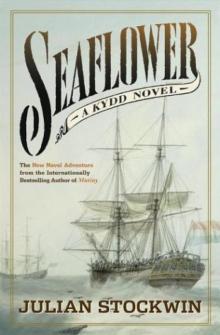 Seaflower k-3
Seaflower k-3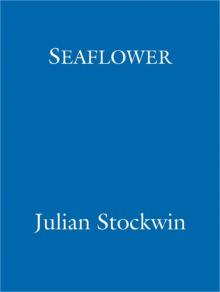 Seaflower
Seaflower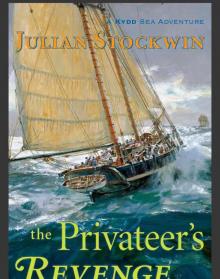 The Privateer's Revenge
The Privateer's Revenge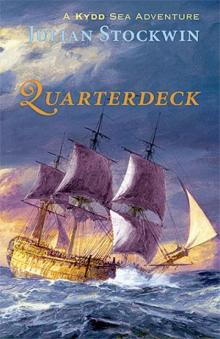 Quarterdeck: A Kydd Sea Adventure
Quarterdeck: A Kydd Sea Adventure Kydd
Kydd Artemis
Artemis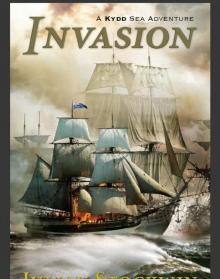 Invasion
Invasion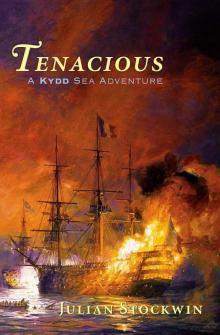 Tenacious
Tenacious 06 - Tenacious
06 - Tenacious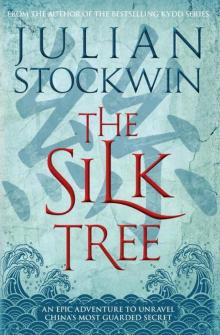 The Silk Tree
The Silk Tree